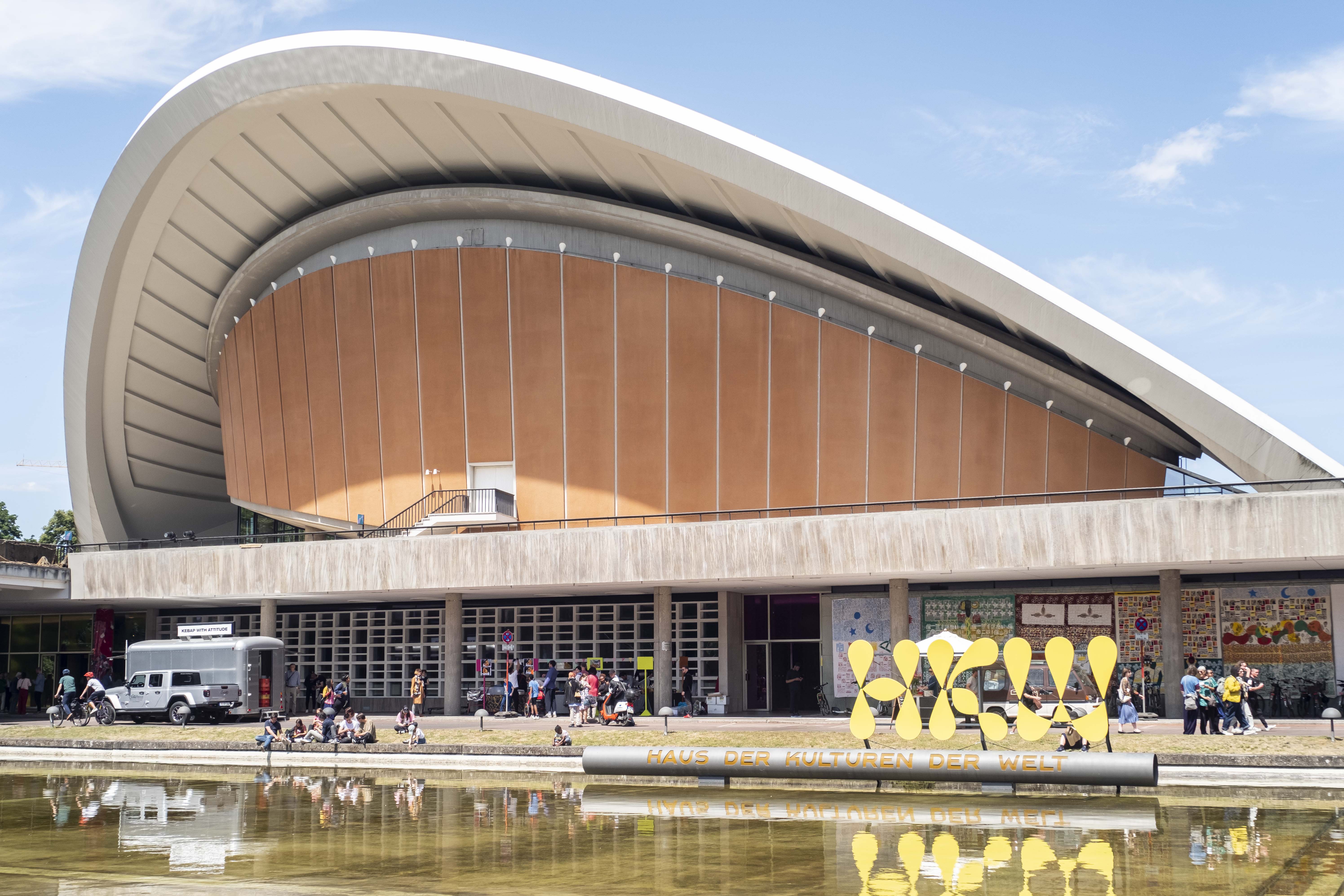It’s a new dawn. It’s a new day at the Haus der Kulturen der Welt (HKW) in Berlin. And O Quilombismo, new director Bonaventure Soh Bejeng Ndikung’s inaugural exhibition, feels good.
How do you create a space free from domination, where unfamiliar cultures can see, hear, and meet one another as equals? Especially if the ground you stand on is marred by imperial and colonial ideology?
The HKW’s re-opening exhibition O Quilombismo: Of Resisting and Insisting. Of Flight as Fight. Of Other Democratic Egalitarian Political Philosophies answers: you base yourself on the histories of resistance and freedom, which demonstrate that another world is possible. It’s on show until September 17th, 2023.
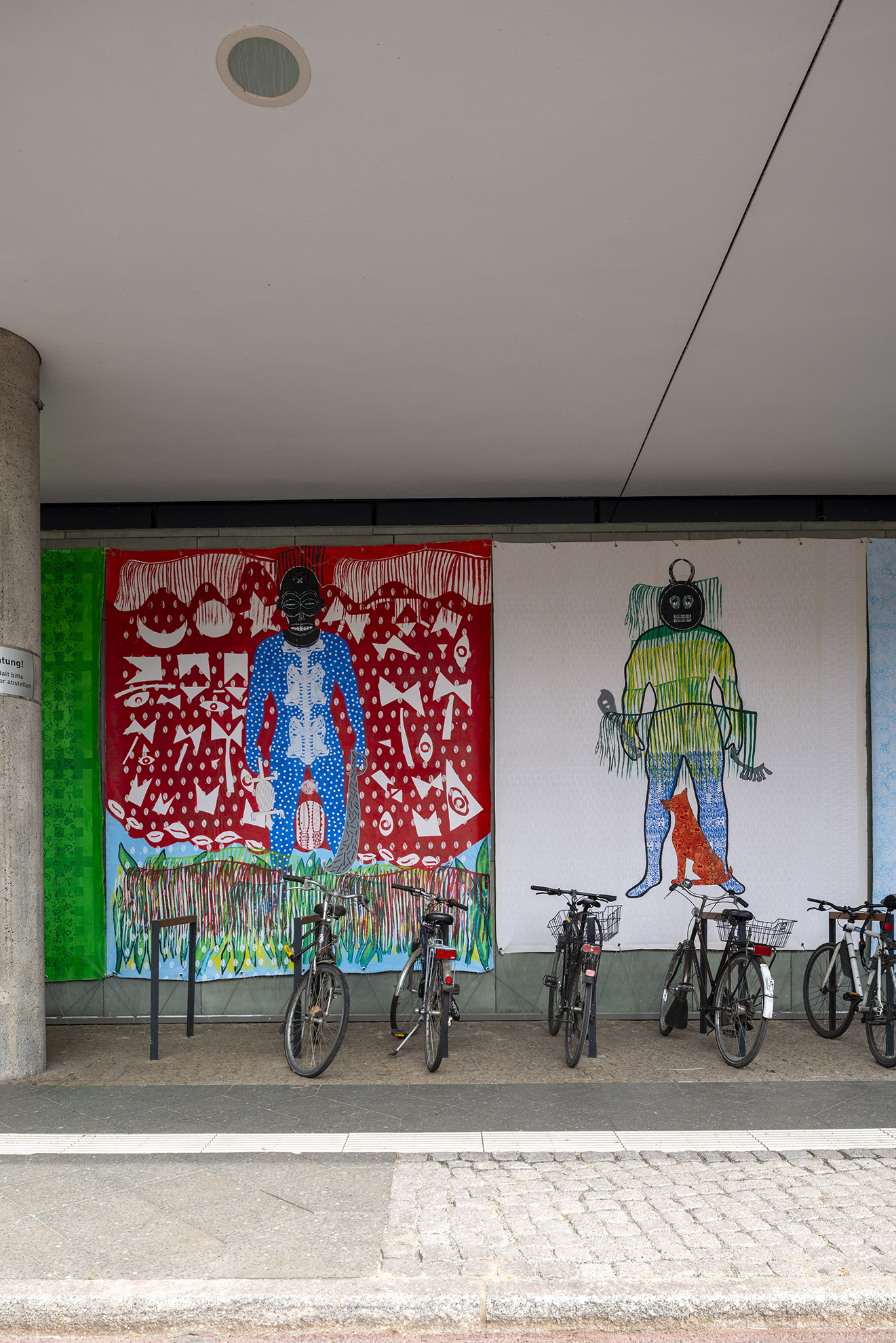
For this exhibition, “the whole building was declared an artwork,” says Eva Stein, a member of the curatorial team. The show begins before you even enter the building.
While locking up your bike, for instance, you find yourself looking up at Alberto Pitta’s awe-inspiring Yoruba deities guarding the entrance. Once you enter the foyer, this continues. Whether under the ceiling or down the hallway, there is something to see everywhere you look.
O Quilombismo takes its cues from quilombist philosophy, which is rooted in the communities built by Afro-Brazilian escaped and emancipated enslaved people. Abdas Nascimento, a key figure in the development of the philosophy, defines quilombos as “societies of fraternal and free reunion, or encounter; solidarity, living together and existential communion.”* To him, they represent(ed) an economic alternative to the exploitation and oppression of capitalist plantation economy.
Several of Nascimento’s colourful paintings are on display. They centre the African imaginaries that were vital to the quilombos and continue to influence present-day Brazilian culture. Most prominently, Oshunmare Rising (1972) depicts the rainbow spirit radiating bright colours above the sea.
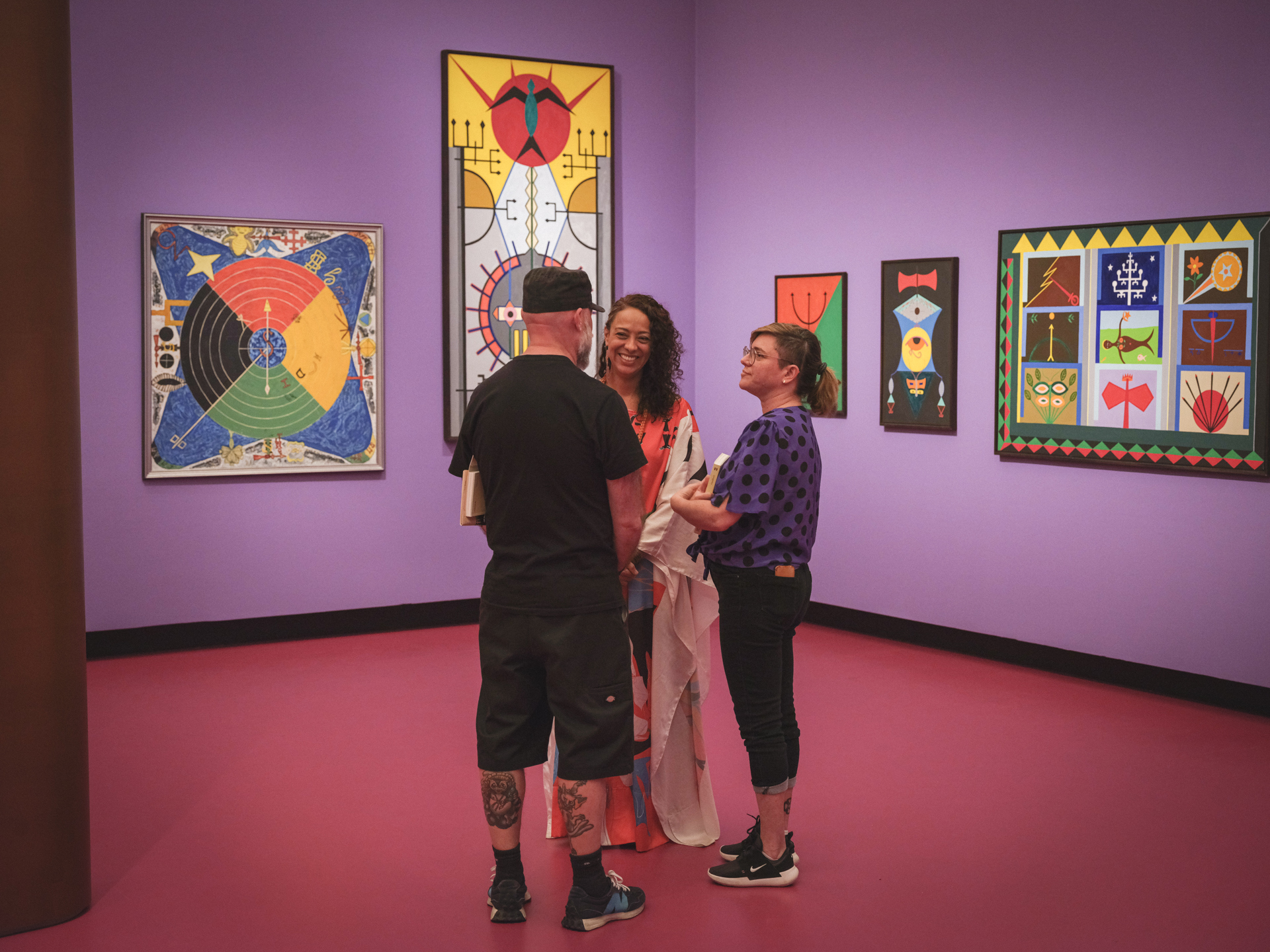
Other artworks go beyond the original historical context. One example is Arnad Patwardhan’s video installation We Are Not Your Monkeys (1996). It shows Dalit activist Sambhaji Bhagat sitting in a circle and, through singing, deconstructing the entanglements of Aryan conquest, religion, and caste hierarchy. In conjunction with the accompanying choir, percussion, and interjected imagery, his words send chills down your spine.
We will sing songs of humanity / And we will make you human as well.”
There is no better way to capture what the exhibition as a whole is about, than this installation’s final words: “We will sing songs of humanity / And we will make you human as well.” It speaks with great power and emphasizes re-humanization over the preceding de-humanization.
Strong curatorial choices define the exhibition. The focus is on leaving visitors to engage with the exhibits without much context at first instance. Instead of descriptive texts on the walls, you receive a sizable handbook upon entry.
This challenges you to rest with nothing but your perception for just a moment before you look up detailed information in the handbook. Given the breadth of the exhibition, with over 70 artists participating, this can be a bit overwhelming.
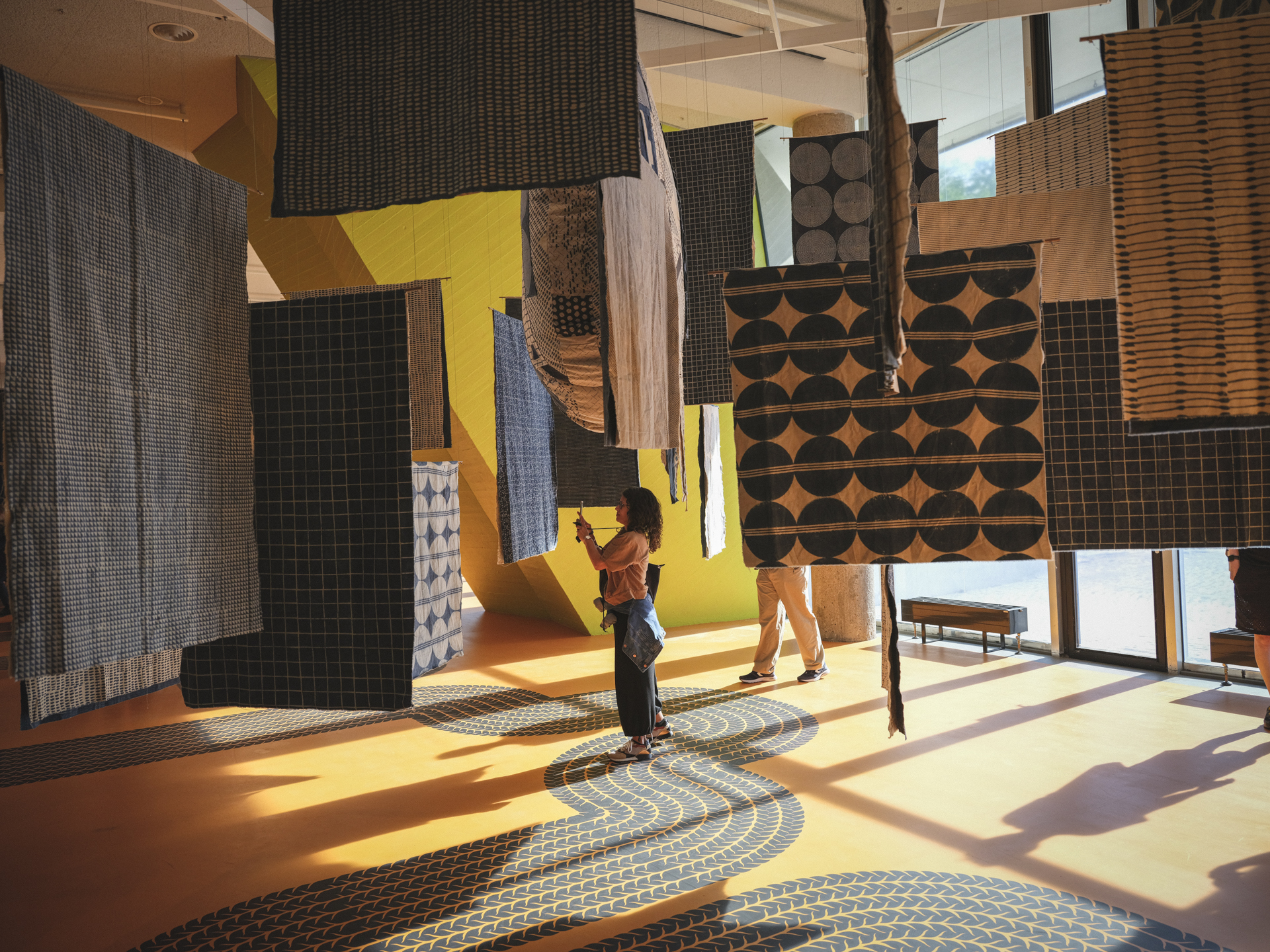
Those who visit with the genuine intention to learn something from an unfamiliar cultural context will appreciate being asked to put in the effort. After all, meeting as equals is a two-way street.
Ultimately, the exhibition is designed for you to spend time in and with it. It invites you to wander and wonder, to walk across, to sit within, to listen, feel, and smell. To go have a coffee and return to the pieces that attract you. Or to return another day and join an event from the multifold concurrent program. One way or another, to come close to the world(s) manifested in the artworks around you.
This feeling was underlined by a staff member of the HKW who pointed out that the building was filled with people and felt alive. Previously, between major conferences, the opposite was often true.
They attributed this to the renewed emphasis on continuous programming and the expanded role of music. The effort is noticeable, as the HKW’s concerts have drawn broad audiences. When was the last time you listened to a live concert and danced in the middle of an exhibition space?
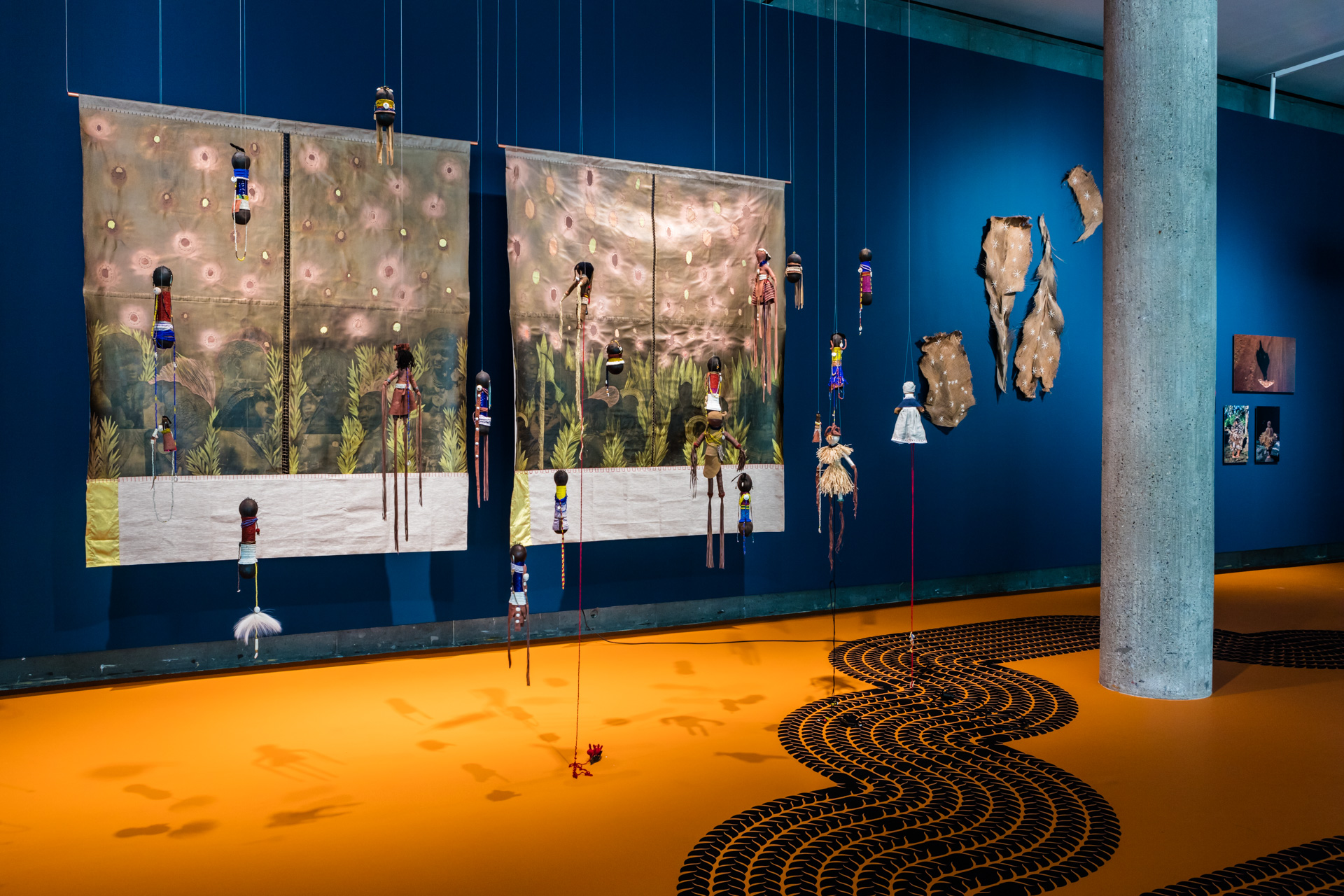
Finally, to say that O Quilombismo feels good isn’t to take away from the pain and suffering it inevitably encompasses. It is to dream of freedom from cultural colonization. One that feels as good as Nina Simone’s, when she sings to the birds flying high. It is to dream of a house that can become a home of the cultures of the world.
More about the contributing artists and the Haus der Kulturen der Welt here
*Abdas Nascimento, “Quilombismo: An Afro-Brazilian Political Alternative”, Journal of Black Studies, 11/2 (December 1980), 141-178
Noah Schmitt is a philosophy student at the Humboldt University of Berlin. His research focuses on the international and plural dimensions of world-making systems. In particular, he is interested in the implications of postcolonialism for the European tradition of critical theory.

